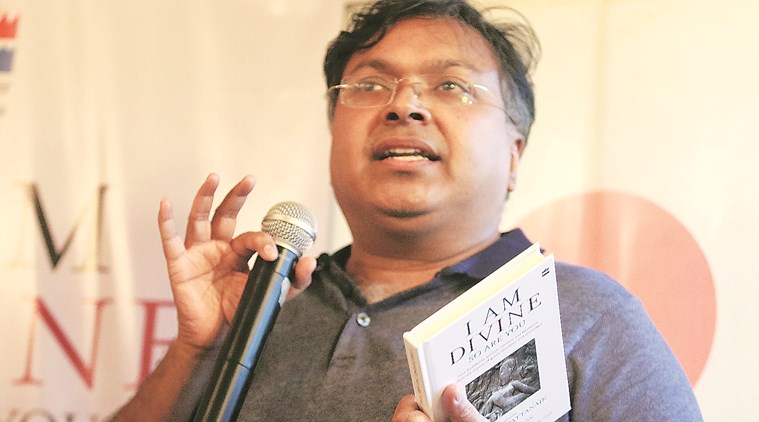 Devdutt Pattanaik (Express Photo by Praveen Khanna)
Devdutt Pattanaik (Express Photo by Praveen Khanna)
Written by Tanushree Ghosh
A Buddhist in crisis in Sweden goes to the local parish priest who has never heard of Buddhism and doesn’t know what to do. It was this concern to educate and equip counsellors to handle people of different faiths, to find a global vocabulary and make religion look like an ally, not an adversary, that the idea for a book project occurred to the Church of Sweden two years ago.
Behold, I Make All Things New, the first of a three-part book series, looked at how the Abrahamic faiths (Christianity, Judaism and Islam) dealt with sexuality. But there wasn’t much clarity. That’s when the Church decided to bring in an understanding of the Karmic faiths (Buddhism, Jainism, Sikhism and Hinduism) — exploring the concepts of karma, rebirth and dharma — and how these affirm the dignity of queer individuals. Mumbai-based, English-language mythologist, Devdutt Pattanaik, was brought on board to oversee the project. He gave the introduction and inputs on Hinduism in the book, I Am Divine, So Are You (HarperCollins, Rs 299).
“All ancient scriptures recognise the male, the female, and the third sex,” Pattanaik said, at the recent launch in Delhi where he was in conversation with Sukhdeep Singh, the founding editor of the Indian LGBTIQ magazine Gaylaxy, who contributed the chapter on Sikhism.
“I don’t have a deep knowledge of religious texts. I have written articles for Gaylaxy, exploring Sikh identity and sexuality; there’s no place for homophobia in Sikhism,” says Singh. “The language is technical,” agrees Pattanaik, “but it’s also done for an international audience.” “The challenge was to present it in a language that doesn’t offend anyone.”
This became a personal project for Singh, who says, “it is assumed that you can’t be Sikh and gay with your turban and beard.” Online research threw up an image from Janamsakhi – Guru Nanak with a cross-dressing Sufi pir Sheikh Saraf, “although it might not be historically true, that was a discovery, kind of an affirmation of how there was no hatred for a transgender/person of another sexuality,” he says.
Queer isn’t a 20th century European discovery, Pattanaik says, it has very much been a part of the canons. The word pandaka, in Pali or Prakrit, is perhaps a homosexual or transgender who’s not allowed to be a monk. Later, Buddhism saw Buddha take a female form, goddess Tara. Jain texts on gender studies done 1,500 years ago, differentiate “between napunsaka (effeminate man) and purusha napunsaka (straight-acting gay person). Done not from an empowering angle, but a filtering one — to keep them out of the monasteries — yet acknowledging their existence. So, when someone says, ‘humare culture mein hai hi nahin (not in our culture), I ask, ‘arre, padhe ho kya? (have you read?)’,” Pattanaik rues.
“Tulsidas’ 15th century Ramcharitmanas also shows that on Ram’s return from exile, he finds the napunsakas waiting for him outside, and enters Ayodhya with them, saying, ‘Men, women, even queer people, as well as plants and animals, are equally dear to me, when they abandon malice and approach me with faith.’ This spirit of open-heartedness is my Hinduism,” says Pattanaik.
Sexuality is “yugantar, always evolves”. About the Supreme Court ruling on Section 377 and referring the plea to a Constitutional bench, Pattanaik says, “Love is far more important than law.”